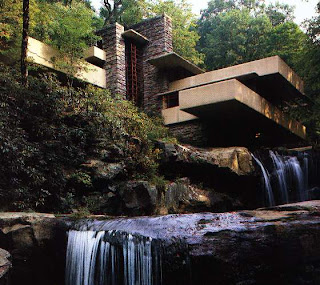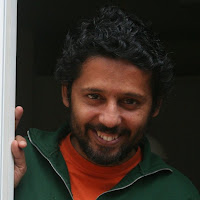About The Author
Himanshu Burte, is an architect and an Assistant Professor at the School of Habitat Studies, at Tata Institute of Social Sciences, Mumbai. A graduate of Sir JJ College of Architecture, Mumbai (B. Arch. 1990), has been actively involved in architectural practice, research, writing and teaching. Himanshu has written extensively on architecture, art and urbanism in the popular and professional press, and has been invited to speak at many national and international conferences in India and abroad.
His first book, ‘Space for Engagement: The Indian Artplace and a Habitational Approach to Architecture’ was published in 2008 by Seagull Books, Kolkata _ Read more about him here
The real Fallingwater?
Seeing Fallingwater for the first time is an important event for most architects. Frank Lloyd Wright’s masterpiece was built in 1936 but its appeal does not seem to dim for architects. You know why when you visit it. Sure, it surprises me with its small size. And yes, many of its details suddenly appear slightly dated, something you don’t remember feeling in photographs. And yet, the experience remains special. Fallingwater is a rare artwork that makes its setting look as good as itself.
 |
| Photo Courtesy: wright-house.com |
There is a problem though. You begin to sense it as you walk through the one-hour guided tour. Somehow, you begin to wonder whether you are experiencing the real Fallingwater, the home Wright designed for the Kaufman family. Yes, you are in the same building. But you are with a small crowd that is being led through a truly intimate space meant for a small family. You are to be in the space for a specified amount of time. And, finally, you rarely sit down during your programmed wandering. Is the experience of architecture independent of the mode in which you have it? The way we have learnt to think about architecture, the answer is yes. But of course, real life teaches us that the answer is, ‘no’. Why this discrepancy? One reason is that architects are trained to think that the built object is everything. Our focus is entirely consumed by the object so we tend to discount many other things. In reality, of course, we cannot fully succeed in discounting other things, so we do sense that something is strange about moving through a small house with a crowd. A space that must have seemed intimate (as well as expansive) to a family of four or five people can feel claustrophobic in the company of thirty.
No wonder, then, that I often had the feeling that I was actually experiencing a very different place in the same space. I could enjoy much of Wright’s artistry. I took a lot of photographs (including from the ‘famous’ angle downstream, helpfully marked on the grounds). I also experienced things that were impossible to experience in photographs and other people’s words. But it was still a bit like visiting a perfect copy of Fallingwater right where it was. Fallingwater, the built object, stood right where it had always been. But inexplicably, it had also turned into its own museum copy in situ, at least in terms of the ‘real’ experience I could have of it.










3 Responses
Love the way you have written and can totally relate to the entire dichotomy of how architecture is supposed to be experienced and on the other hand – the way it really is. You know how often most of us architects tend to remove ‘people’ from our pictures- except just keeping some silhouette for scale – just to not ‘spoil’ the piece of art – forgetting that the art is actually been constructed for that very ‘people’.
But it is also interesting on how there might be a discourse on ‘how to experience architecture’. The point of how a small intimate space has now become public..
Wright designed the house for the Kaufmann family, and their experiences and responses in the spaces must have been Wright’s delight, apart from his own inner exuberance while experiencing the spaces he created…No guided tour can replicated those responses and experiences. Yes, the delight can be experienced better if one is allowed to silently walk around and pause wherever one desires… To that extent all such great built forms should be declared sacred and silent zones… the least mankind can do to recognize great creations by one in a million among them…
Simply a great grand n GREENEST structure of life time, must visit once!